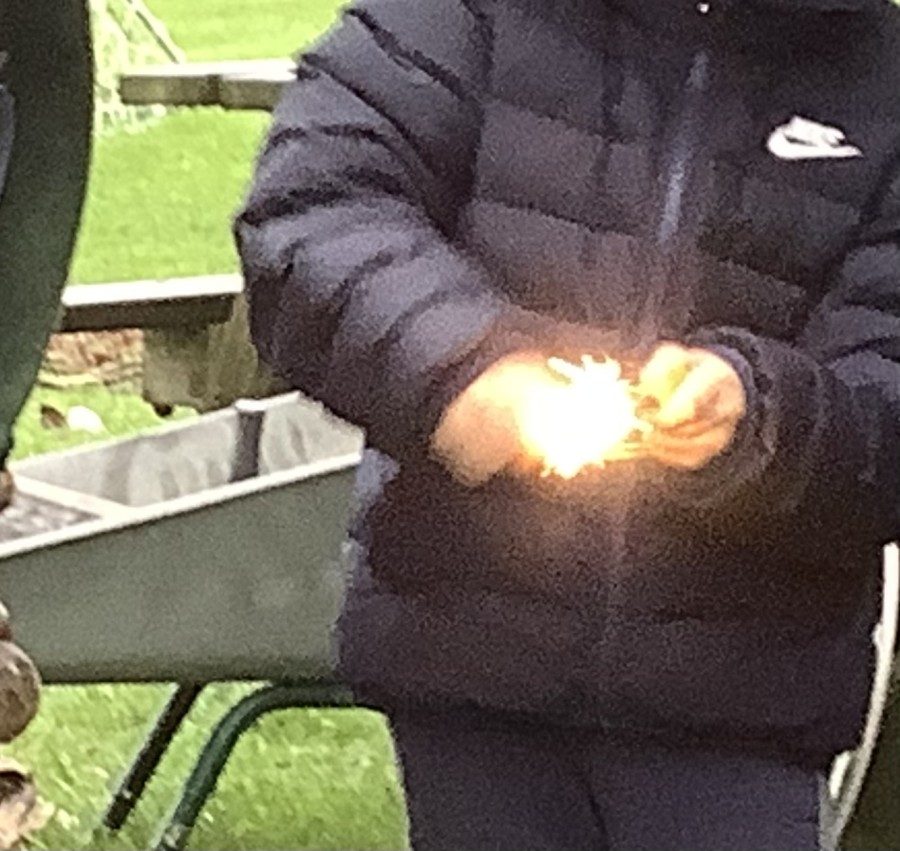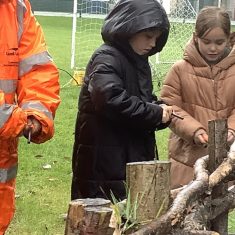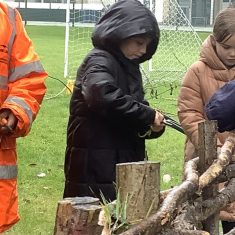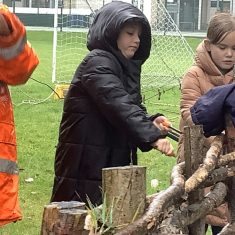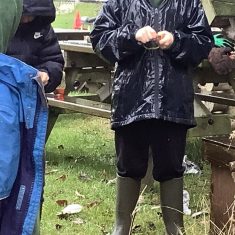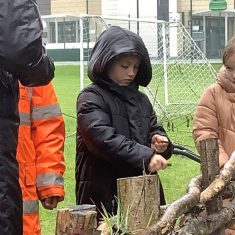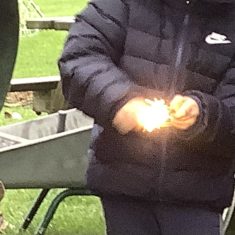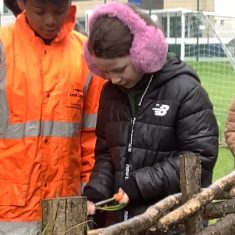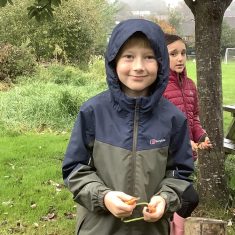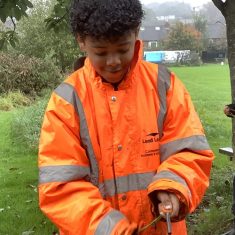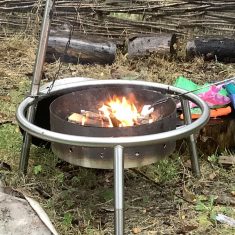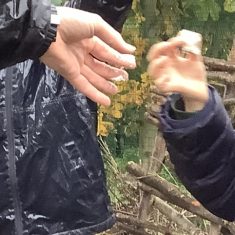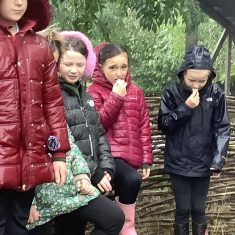Fire lighting can be a tricky affair, add in the rain and the wind and the task can get really challenging. The Year 4 children watched as Miss Rowe battled the elements to get the campfire lit. A little bit of help, in the form of a well placed ball of cotton wool, meant that eventually the tinder took the spark and the flames burst into life. Patience and perseverance are a necessity in conditions like this.
We talked about what is needed to light a successful fire, using the fire triangle to help us to remember. Then the children went to find some strange materials to burn. This is a really important exercise that demonstrates first hand what can happen when man made items such as crisp bags, foam, nylon string or plastics burn. They watched as these materials shrank and shriveled, sticking to the charcoal already in the fire, imagine if that was touching you, it would melt and fuse to your skin. Very nasty. They also saw that immediately the smoke changed to black more noxious plumes. It shows them very clearly why we burn natural materials instead, much easier to control, they don’t burn as hot and the fumes are not as damaging. It’s an important conversation to be having with Bonfire Night coming up.
After some STOP, DROP and ROLL practice they then had the opportunity to try and create their own sparks using a flint and steel. This is a difficult skill that involves a lot of fine motor control and some mental resilience, especially in the pouring rain. As you can see they did manage to make a spark which is incredibly satisfying. Those that were successful then helped others to do it and at the end of the session everyone was rewarded with some toasted marshmallows.
The Risk Principle: Forest School offers learners the opportunity to take supported risks appropriate to the environment and to themselves.
Article 19: We all have the right to be protected and kept safe.
- The children took photos of each others progress.
- Finally we have ignition!
